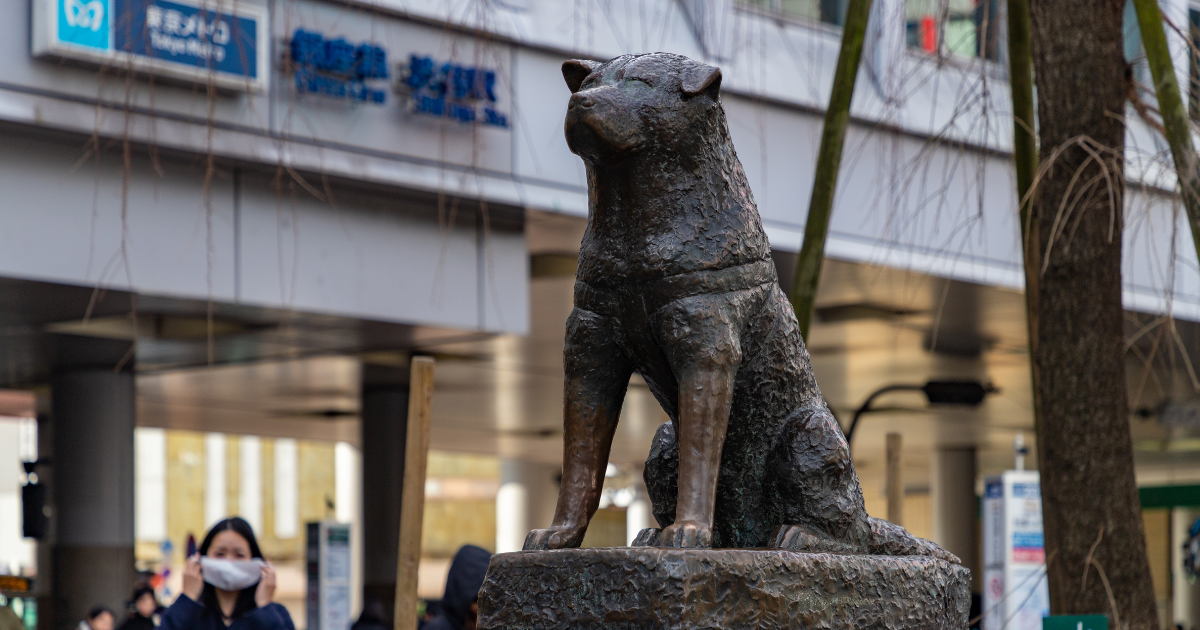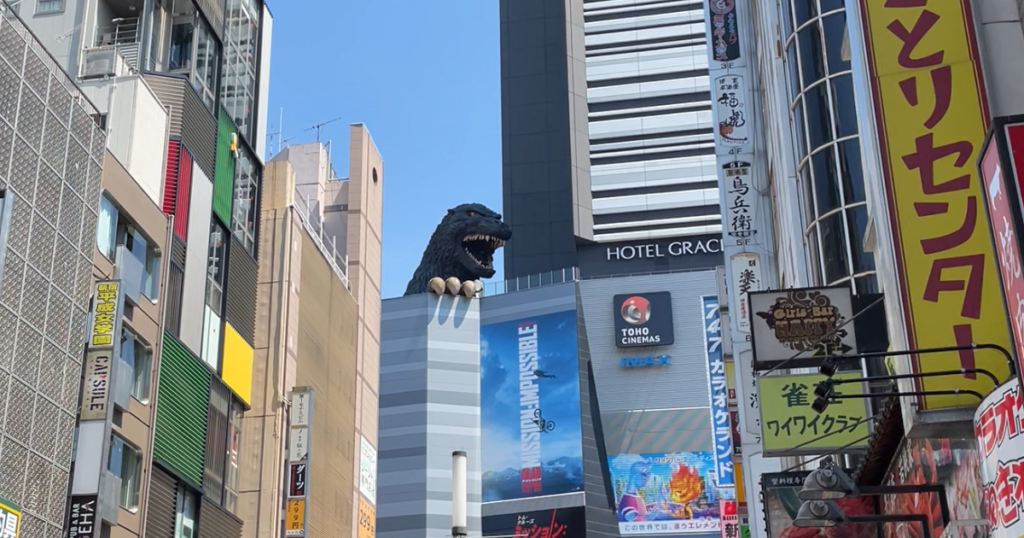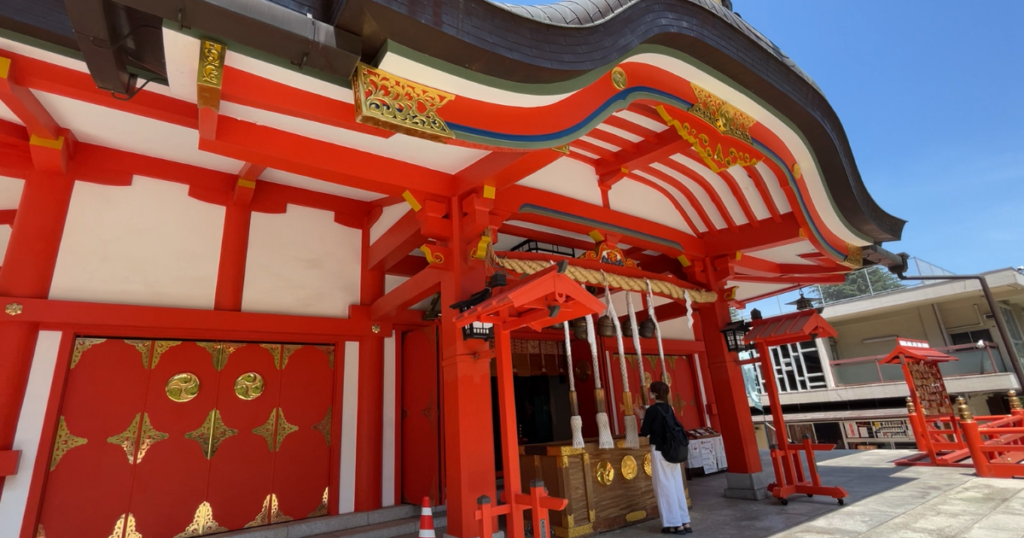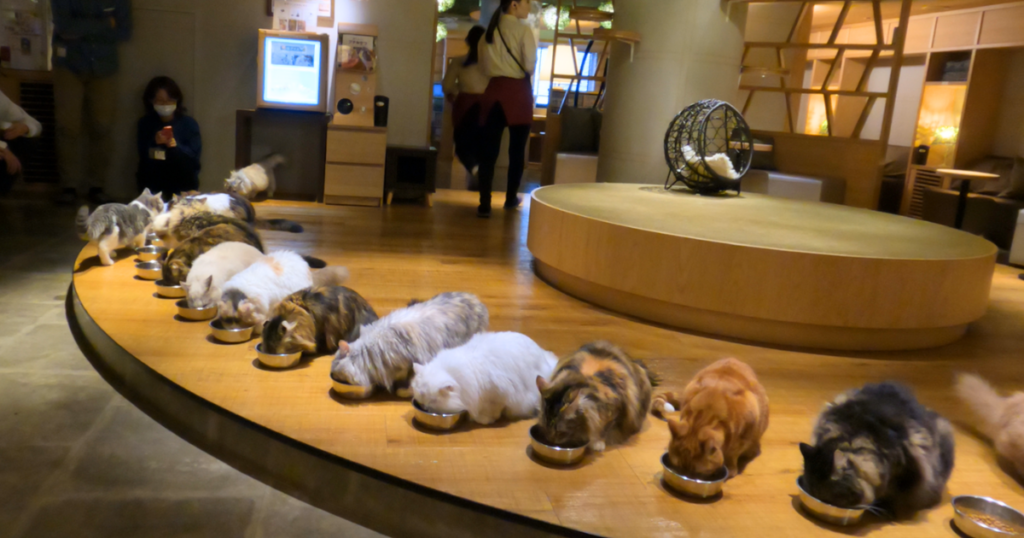The Hachiko Statue, located near the Hachiko Exit of Shibuya Station in Tokyo, is one of Japan’s most iconic landmarks.
This bronze statue commemorates the remarkable loyalty of Hachiko, an Akita dog who waited for his deceased owner every day for nearly a decade.
Today, the statue serves as a popular meeting spot and a powerful symbol of love, devotion, and resilience.
Hachiko’s Overview
Location & Design
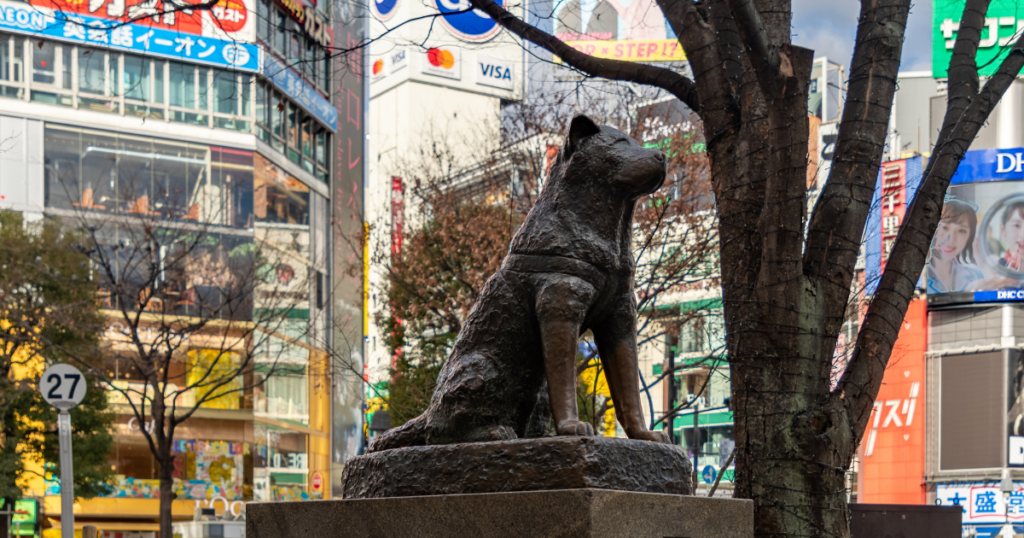
The statue is situated in one of Tokyo’s busiest districts, Shibuya, amidst the hustle and bustle of the famous Shibuya Crossing.
Sculpted with great detail, the bronze figure portrays Hachiko sitting patiently, capturing his quiet determination and steadfast spirit.
Historical Background

The original Hachiko Statue was unveiled in 1934, while Hachiko was still alive.
Unfortunately, it was destroyed during World War II.
In 1948, a replacement statue was erected, designed by Takeshi Ando, the son of the original sculptor.
This statue continues to stand as a tribute to Hachiko’s extraordinary loyalty and has become a beloved cultural landmark.
The Heartwarming Story of Hachiko
Hachiko’s Early Life

Hachiko was born in November 1923 in Odate, Akita Prefecture.
He was an Akita Inu, a breed known for its loyalty and intelligence.
In 1924, he was adopted by Hidesaburo Ueno, a professor at the University of Tokyo, and moved to Tokyo.
The bond between Hachiko and Professor Ueno was immediate and profound.
Every day, Hachiko would accompany Ueno to Shibuya Station in the morning and return in the evening to greet him after work.
This daily routine became a symbol of their inseparable bond.
A Tragic Turn of Events

On May 21, 1925, Professor Ueno suffered a fatal cerebral hemorrhage while at work and never returned to the station.
Unaware of his master’s passing, Hachiko continued to wait at the station every evening, hoping for his return.
For nearly ten years, Hachiko’s vigil at Shibuya Station remained unbroken.
His loyalty captured the attention of local commuters, who began to care for him and spread the story of his devotion.
Hachiko became a beloved figure in Tokyo, symbolizing unwavering love and perseverance.
Recognition and Legacy
Hachiko passed away on March 8, 1935, near Shibuya Station.
His story became a national sensation, inspiring the erection of the original Hachiko Statue in 1934, one year before his death.
Hachiko’s remains were preserved and are now displayed at the National Museum of Nature and Science in Tokyo.
Hachiko’s tale has since transcended Japan, with books, films, and global media celebrating his loyalty.
Notably, the 1987 Japanese film Hachiko Monogatari and the 2009 Hollywood adaptation
Hachi: A Dog’s Tale, starring Richard Gere, have brought his story to audiences worldwide.
Lessons from Hachiko’s Story
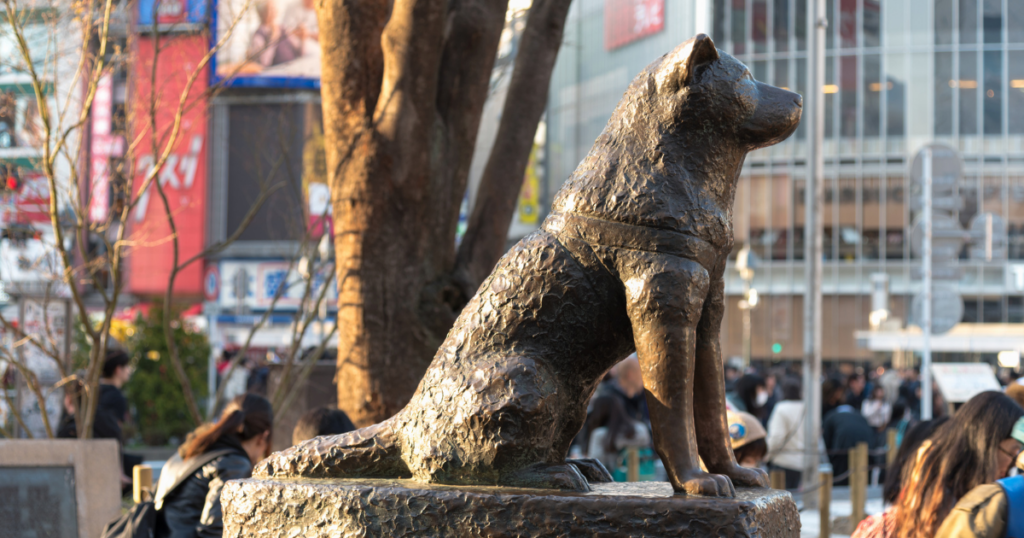
Hachiko’s story is more than just a tale of a loyal dog—it is a testament to the strength of the bond between humans and animals.
His unwavering faithfulness inspires people to cherish their relationships and find hope in enduring connections.
Whether visiting the statue in Shibuya or reading about his life, Hachiko’s legacy continues to remind us of the beauty of loyalty and the power of love.


